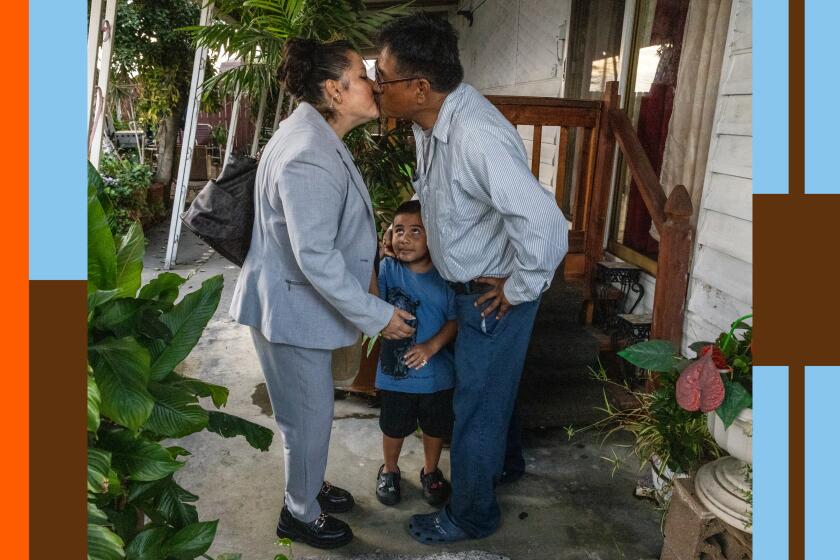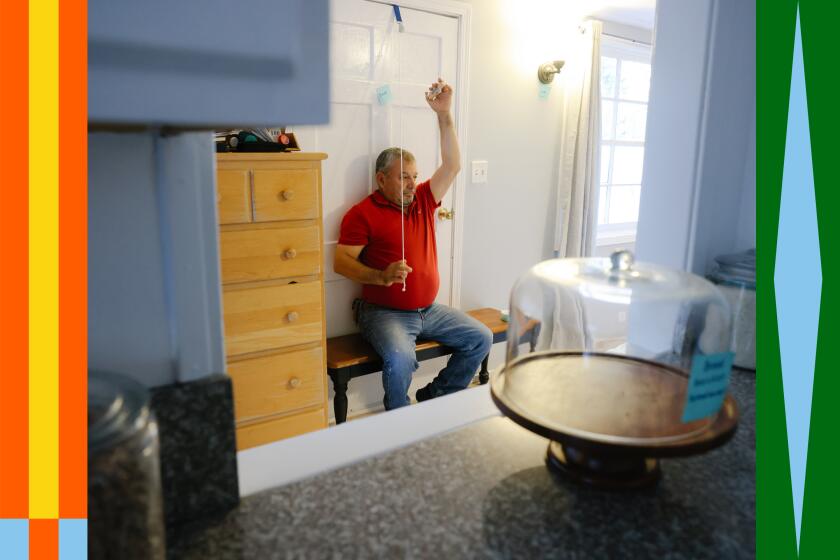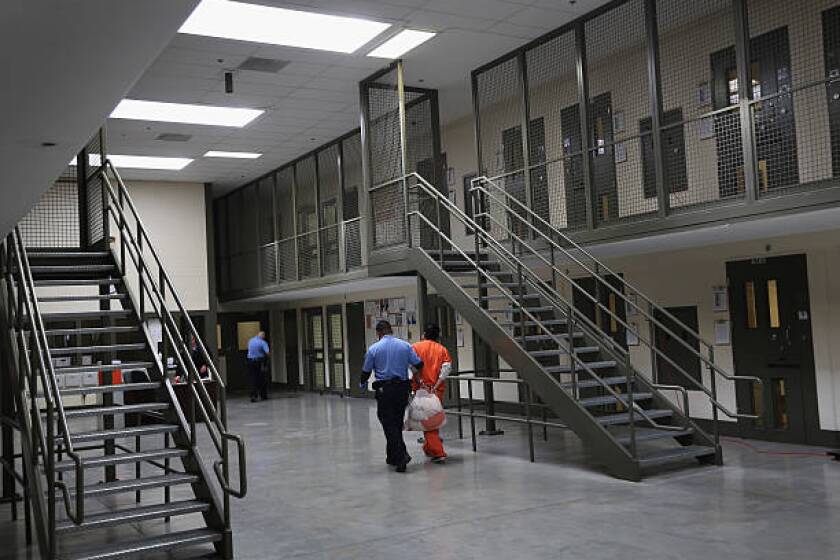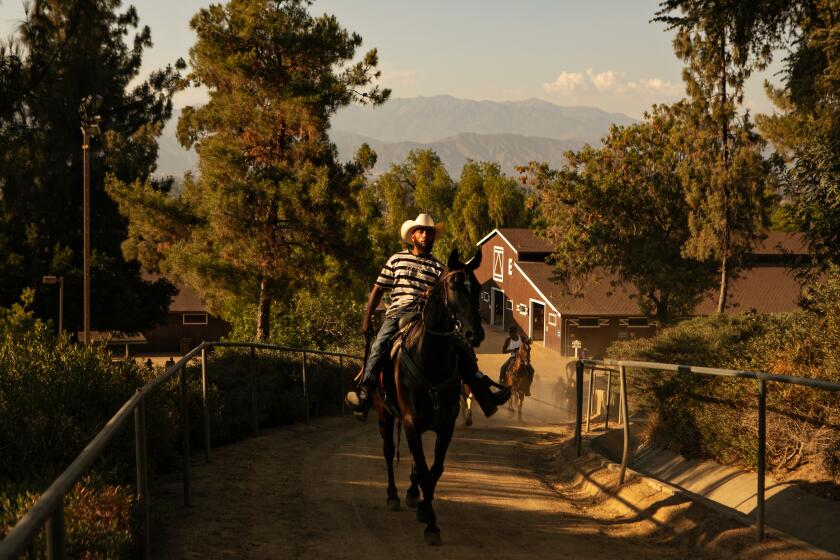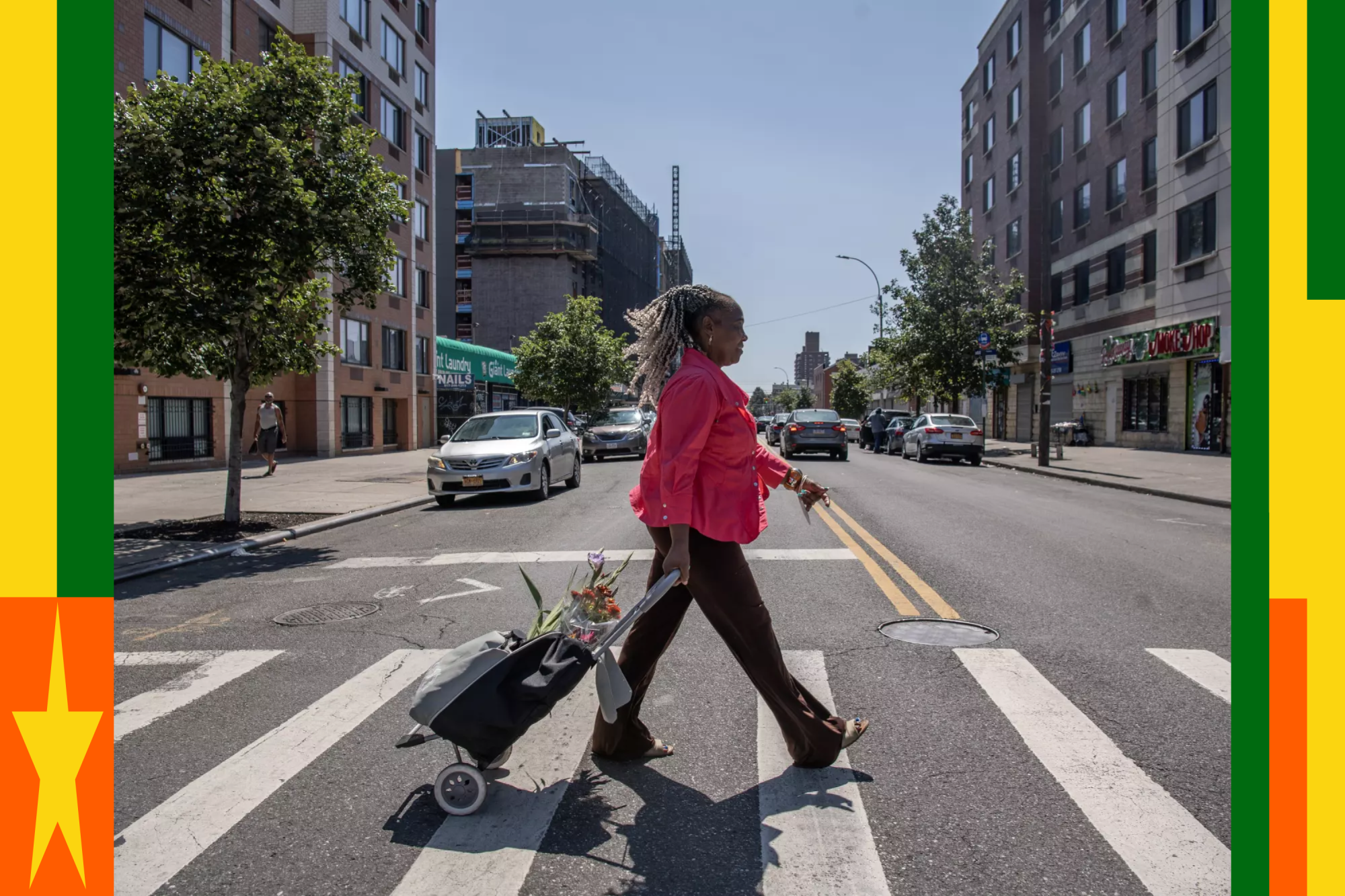
NEW YORK — Winsome Pendergrass watches as her fellow Black New Yorkers take selfies in front of Brooklyn’s Central Library. Rap lyrics penned by hometown hero Jay-Z cover the Art Deco facade to promote an artistic exhibit dedicated to the hip hop mogul.
But Pendergrass feels more drawn to the weekend farmers market she frequents across the street, where tables loaded with fresh produce transport her back to her homeland 2,500 miles south in Jamaica.
She picks up a yam, also a staple in Black American kitchens, and expounds on its use in African cooking. She holds a bright-green okra spear and explains how her older Jamaican relatives, like countless Black elders in the U.S., were unfazed by the nutrient-rich vegetable’s slimy texture.
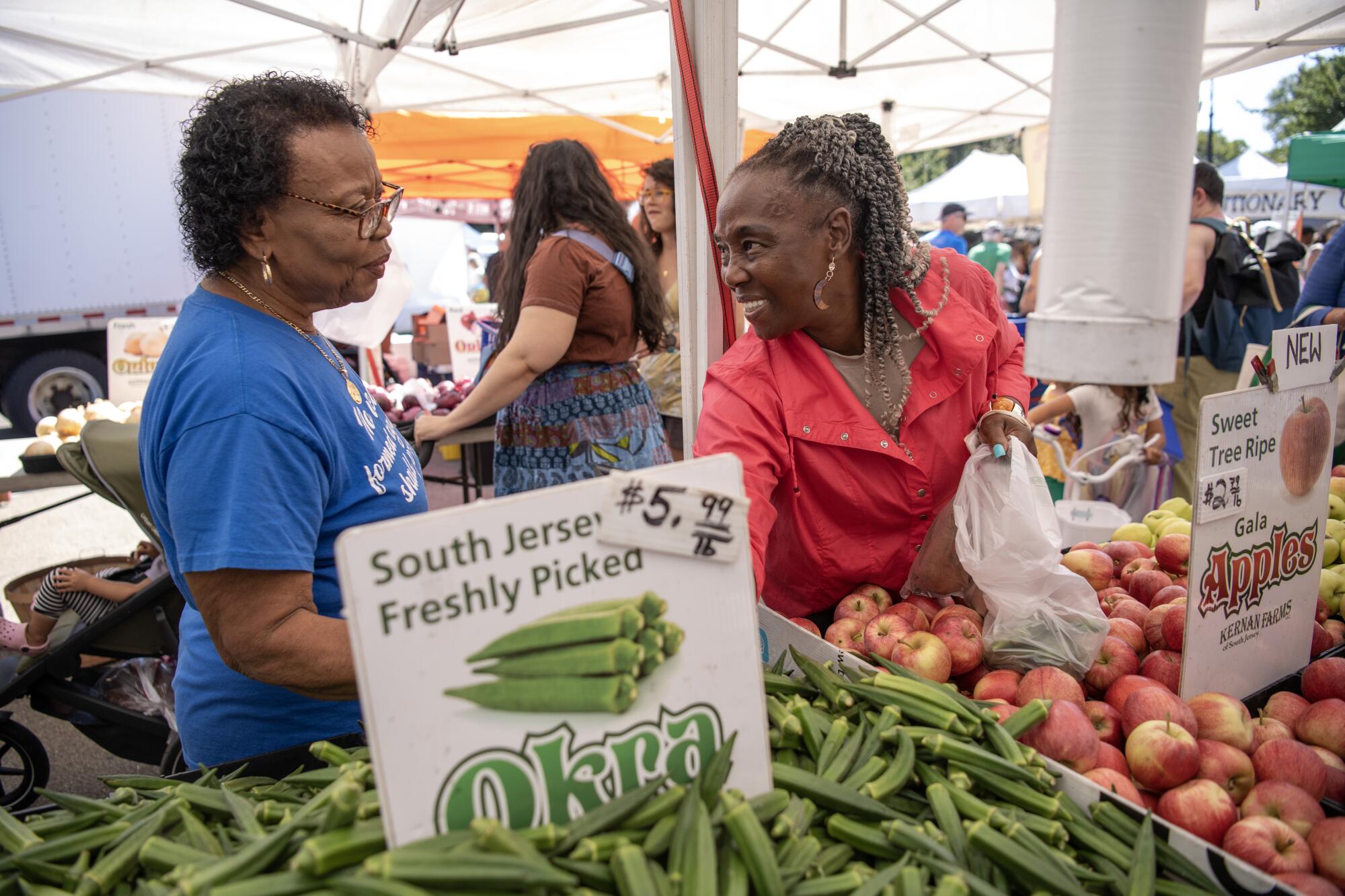
She marvels at the way enslaved Africans — her ancestors and the forebears of most Black Americans — sustained themselves by transforming the worst cuts of meat into flavorful meals.
Black people — be they in Jamaica or the U.S. — carry inside them this capacity for perseverance over adversity and scarcity, she says.
Drawing on an unprecedented poll, this series tells the stories of immigrant life in America today, putting their voices in the foreground.
And yet, it feels to her as though some Black Americans look down on Black newcomers and resent them for taking opportunities they fought long and hard to get.
“You know, the people who tell me to go back to my country the most is Black people — not white people,” Pendergrass says with a sigh.
Immigrants to the U.S. face extensive challenges, but they still report high levels of optimism about their futures and trust in American institutions, a comprehensive survey has found.
Her experience reflects a widespread reality among Black immigrants whose ranks have swelled from just over 2 million in 2000 to nearly 5 million today, or about one-tenth of the nation’s Black population, according to the U.S. Census Bureau. These newcomers, who’ve settled mostly in East Coast cities such as New York, Newark, Washington and Miami, are expected to double in number by 2060.
Pendergrass, 64, who migrated to the U.S. two decades ago and became a naturalized citizen in 2011, is a part of that surge. She participated in a nationwide survey of immigrants conducted by The Times in partnership with KFF, formerly known as the Kaiser Family Foundation, that provides unprecedented insight into the 1 in 6 American adults who were born in other countries.
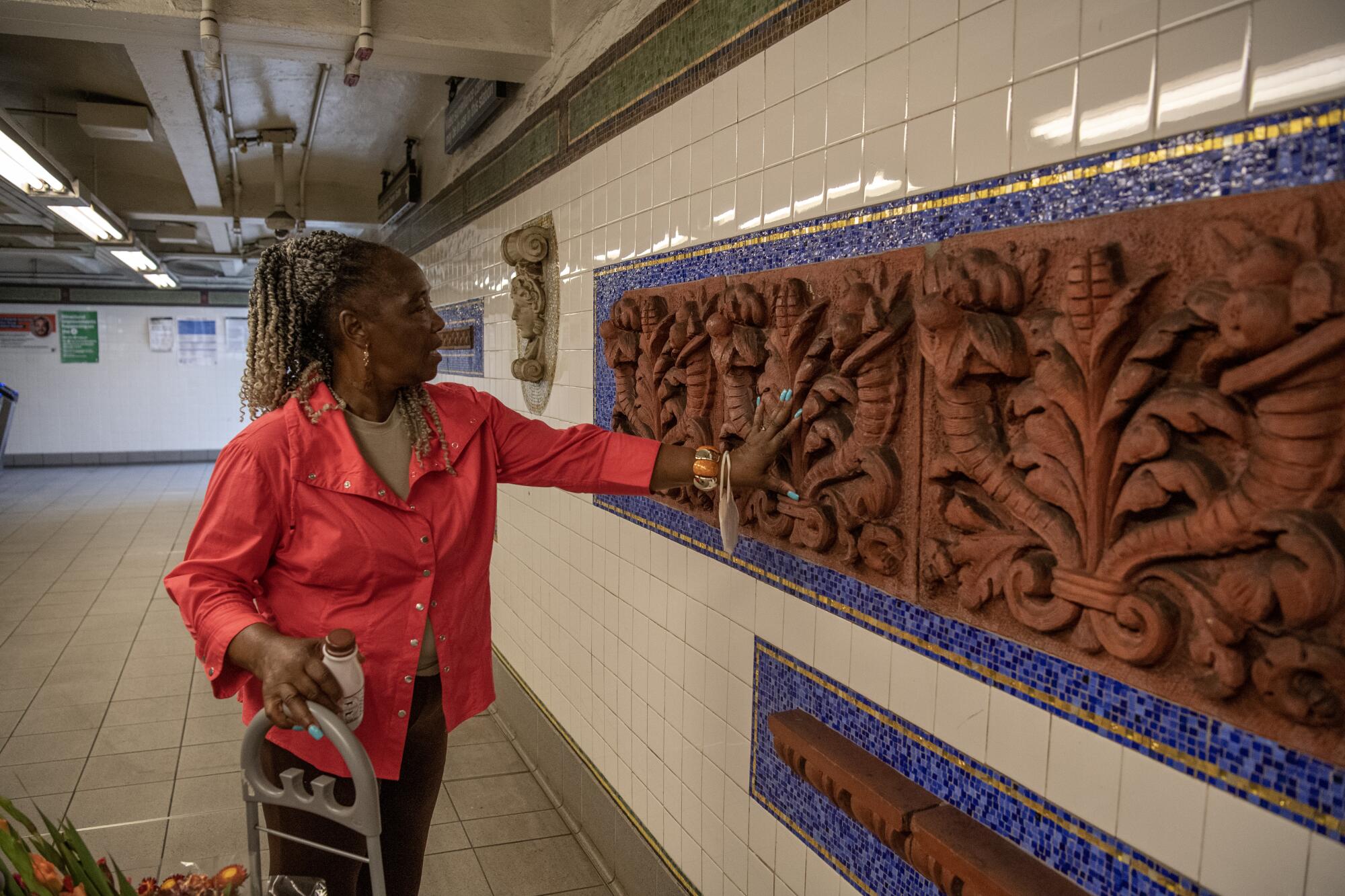
Those from Africa or the Caribbean experience a double burden of discrimination in the U.S., both as immigrants and as Black residents in a country with a long history of racism, according to the first-of-its-kind survey.
Black immigrants, for example, are more likely to report experiencing workplace discrimination and unfair treatment by the police.
And while a third of immigrants overall say they’ve been told to “go back where they came from,” that figure jumps to nearly half for Black immigrants.
Pendergrass says those words are especially aggravating when they’re spoken by citizens from her own race.
“There’s this great divide: ‘Oh, you’re from the islands,’” Pendergrass says.
During two separate focus groups this summer with immigrants from the Caribbean and sub-Saharan Africa, several said they too have been dismayed to find that Black Americans treat them more harshly. As a result, they avoid associating with that community.
Immigrants in the U.S. report high levels of on-the-job discrimination. Among those who are likely undocumented, it’s even worse.
Pendergrass takes special offense to the hostile attitude, because when she’s not working as a private nursing assistant for seniors, she often demonstrates and lobbies public officials for affordable housing and tenants’ rights in largely low-income Black and brown neighborhoods.
“I’m fighting for all Black people,” she says.
She flashes back to an incident that happened on a crowded city bus when President Trump was in office.
A Black man refused to make space for her when she tried to sit, and the two exchanged words.
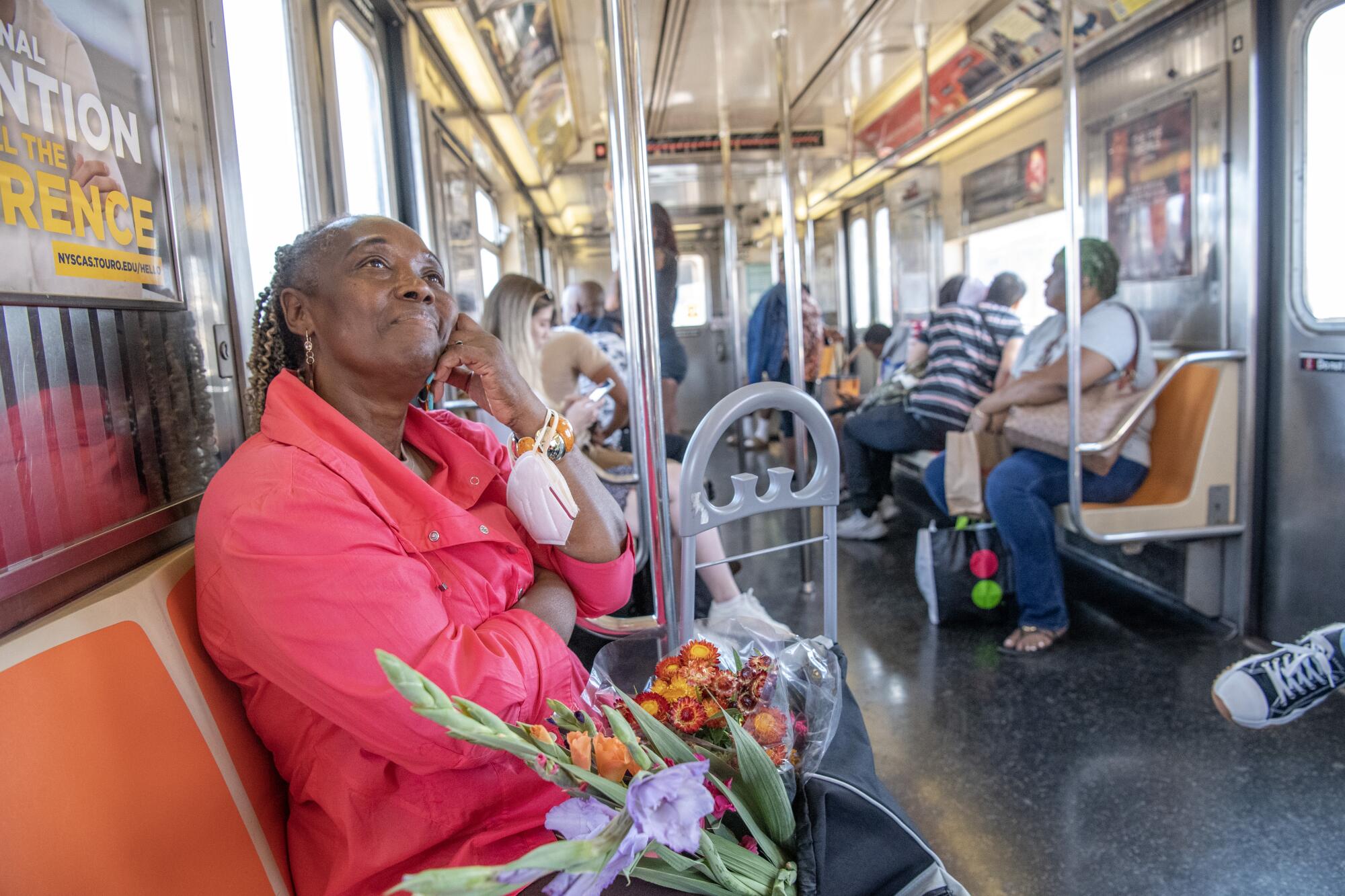
A Black woman who was listening chimed in.
“I guess she picked up on my accent,” Pendergrass says. “The next thing that she said was, ‘I can’t wait till Trump runs them back home. Let them go back to their country.’”
“I said, ‘Are you addressing me?’ and she says, ‘Yes … Trump’s going to run you out.’”
The irony of the passenger’s insult was too rich, given Trump’s racism and his record of publicly disrespecting Black women.
“I said to her: ‘You better pray I’m here to defend you when Trump tries to run you to the land of no return.’”
One advocacy group said hotline calls from Black migrants are probably undercounted and called for more data on the treatment of Black detainees.
How can someone who can also trace her ancestry back to the twin horrors of slavery and white supremacy see Pendergrass as an adversary?
“I’m not here to take anything away from an African American — I love my African American brothers and sisters,” she says.
The mandate for the descendants of enslaved Africans to show common cause with each other has been sown into the Jamaican psyche, Pendergrass says.
Even so, some in Jamaica believe Black Americans have lost touch with this shared heritage as they’ve fought to achieve racial progress.
“They disown they people, but what a day when I and I people come together — start to hold each other,” reggae legend Burning Spear sings in “Greetings,” his 1982 musical plea to Black America. “What a feedback the wicked get.”
Walking past stately apartment blocks near the library, Pendergrass points out that a Jamaican — activist Marcus Garvey — helped foster Pan-Africanism and Black pride in the early 20th century among migrants in Harlem who had escaped the racial violence of the South.
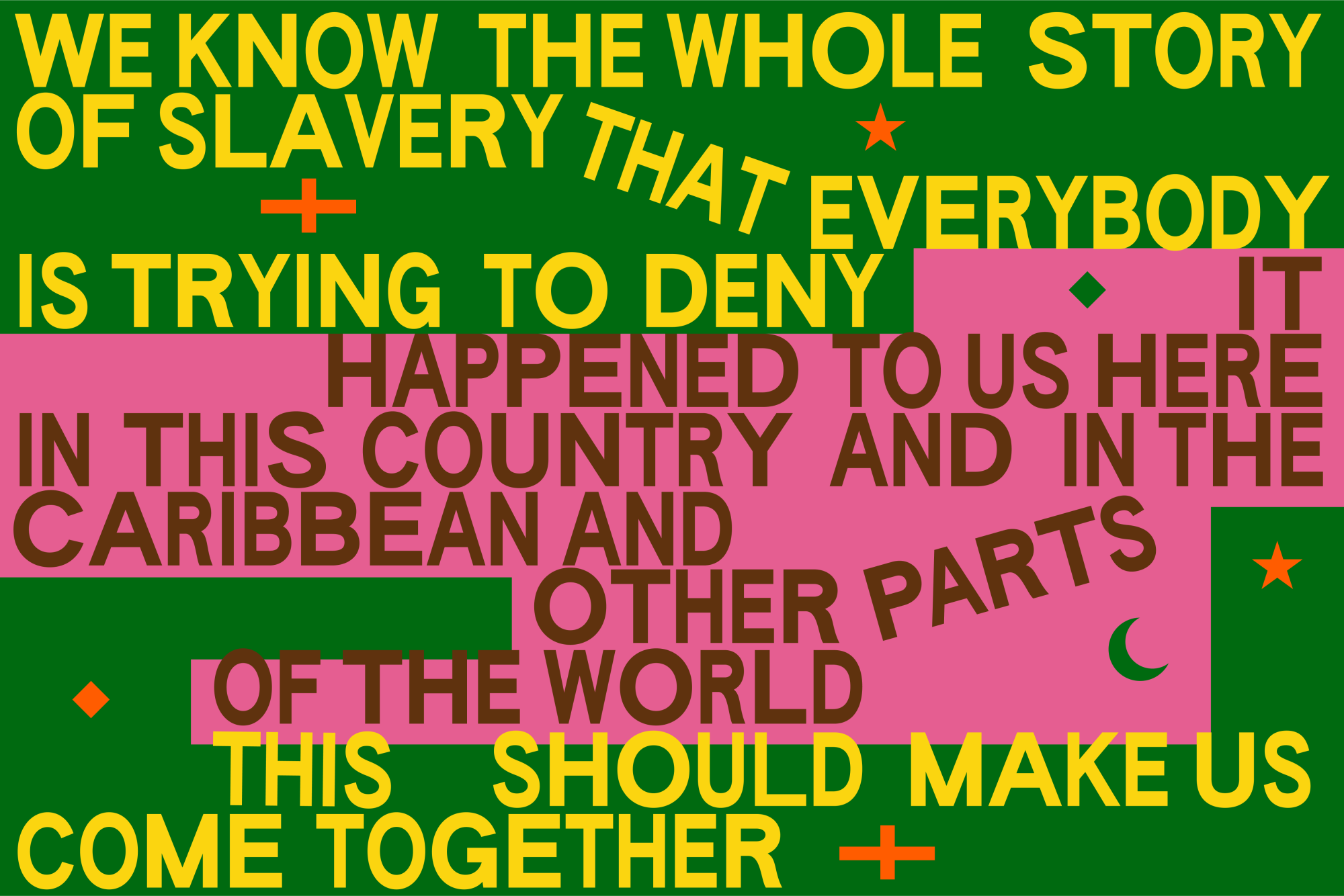
“We know the whole story of slavery that everybody is trying to deny,” Pendergrass says, nodding to the political rift in the U.S. over the teaching of Black history. “This [country’s foundation] is built on their backs, and the backs of their parents and the parents before them and the parents before them.
“It happened to us here in this country and in the Caribbean and other parts of the world,” she says.
“This should make us come together.”

Pendergrass first visited America in 1999 through a U.S. government program for Jamaican agricultural and hospitality workers.
A trained pastry chef, she was given a job cooking on the 5 a.m. shift and unloading supplies at a Bob’s Big Boy restaurant in Petoskey, Mich., earning $4.75 an hour. Pendergrass said yes when she was asked to work for the restaurant chain again the following year.
1
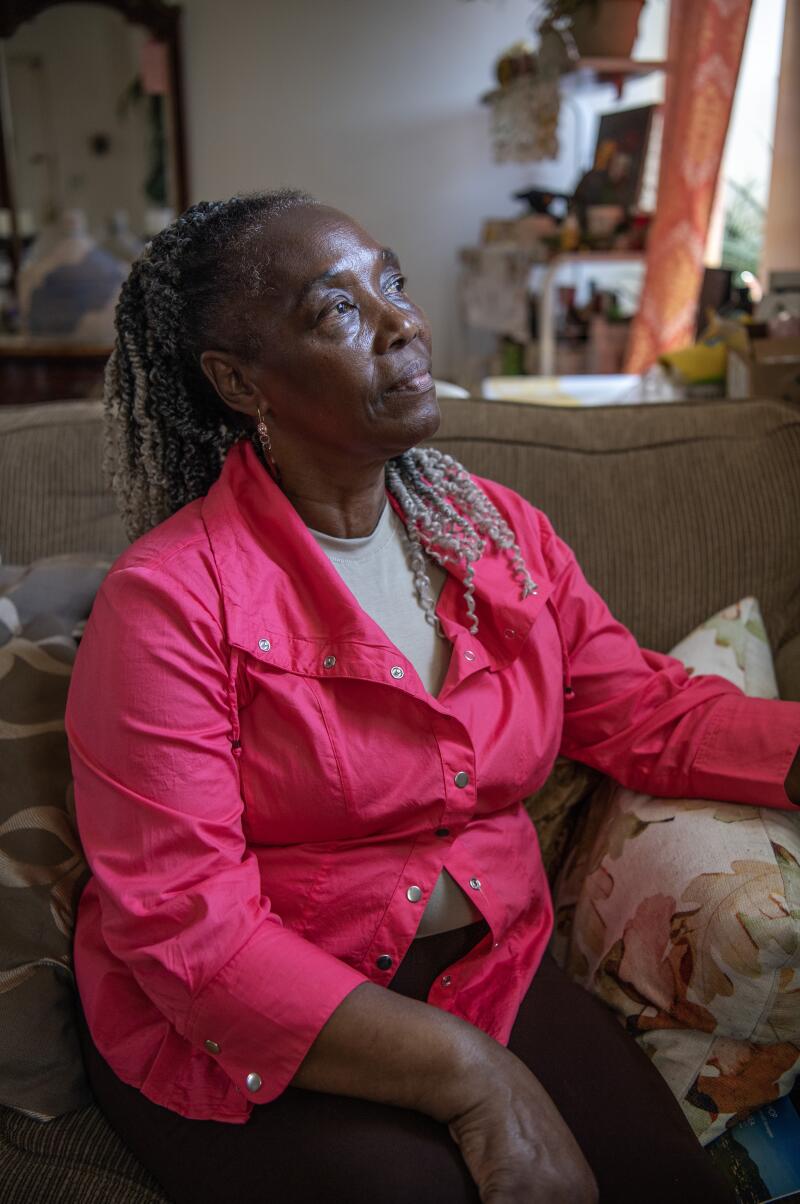
2
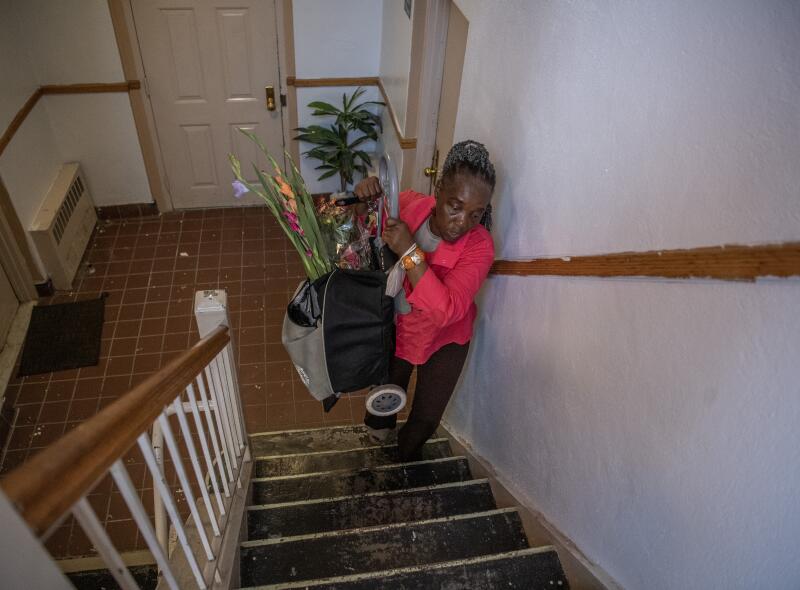
3
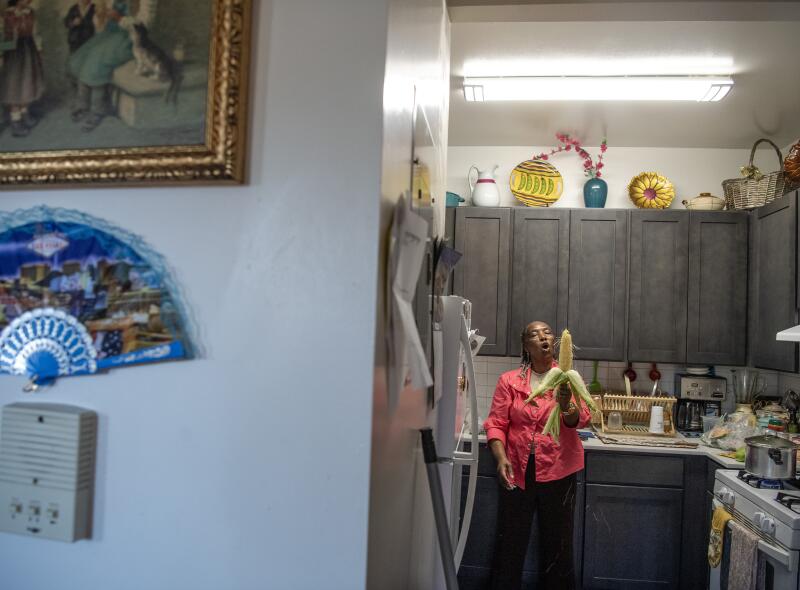
1. Winsome Pendergrass, seen at home in her Brooklyn apartment, shared her candid observations as a Black immigrant with a Times reporter and in a focus group. 2. Pendergrass lugs her farmers market haul to her apartment in Brooklyn. 3. Pendergrass cooks pumpkin chicken feet soup and other old recipes from her homeland. (Brittainy Newman / For The Times)
The work was grueling. And Pendergrass recalls white residents hurling the N-word and throwing beer bottles at her and her Jamaican co-workers as they walked home.
But nothing could dim her enthusiasm to someday build a new life in a land that seemed to overflow with possibilities. She eventually got married and settled in New York.
The U.S., with its rugged individualism and hard-edged capitalism, outwardly bore little resemblance to her homeland of dreadlocked Rastafarian visionaries and righteous reggae singers.
Jamaica may be a vacation paradise, but if you happen to be from there, it’s hard to get ahead, she says. Poverty, crime, lagging healthcare services, the indifference of powerful nations that extract natural resources while doing little for everyday people — many factors have spurred her compatriots to flee the island.
Born in Jamaica’s capital, Kingston, Pendergrass grew up around her mother’s side of the family in the hilly Tangle River district of St. James Parish, 15 miles above Montego Bay’s turquoise waters and plush resorts.
The area was once a refuge for escaped slaves known as maroons who fought fiercely against their British captors. Everybody knew how to corner a chicken before slaughtering it and boil shredded coconut to make oil, Pendergrass says. Neighbors split what little they had with those in need.
That agrarian spirit of self-reliance mixed with egalitarianism still emanates from Pendergrass.
“I’m country,” she says, slipping into her people’s sing-song patois.
“If somebody came with a goat right now,” she jokes, “I’d milk the goat at the drop of a hat!”
Flipping through handed-down copies of Ebony and Jet magazines as a youth, she fawned over glamour shots of Black hit-makers such as Diana Ross and Smokey Robinson, all the while daydreaming about living in their country.
‘In these spaces, it’s safe to be us’: California’s Black trail riders, rodeo stars and ranchers find fellowship and spiritual freedom in rural traditions.
Pendergrass says there are times when she still feels like an outsider looking in at Black America.
To compensate, she holds tight to what gives her comfort — the culture of the tropics.
She goes to the farmers market not just to buy vegetables and specialties like wild fowl. The familiar lilt in the voices of her favorite Afro-Caribbean sidewalk vendors rings like music in her ears.
She converses with a designer from Suriname, in South America, who’s selling handmade shirts and dresses in tribal African prints, and with a fellow Jamaican she knows as Sister Tracey, who offers spices and herbal remedies.
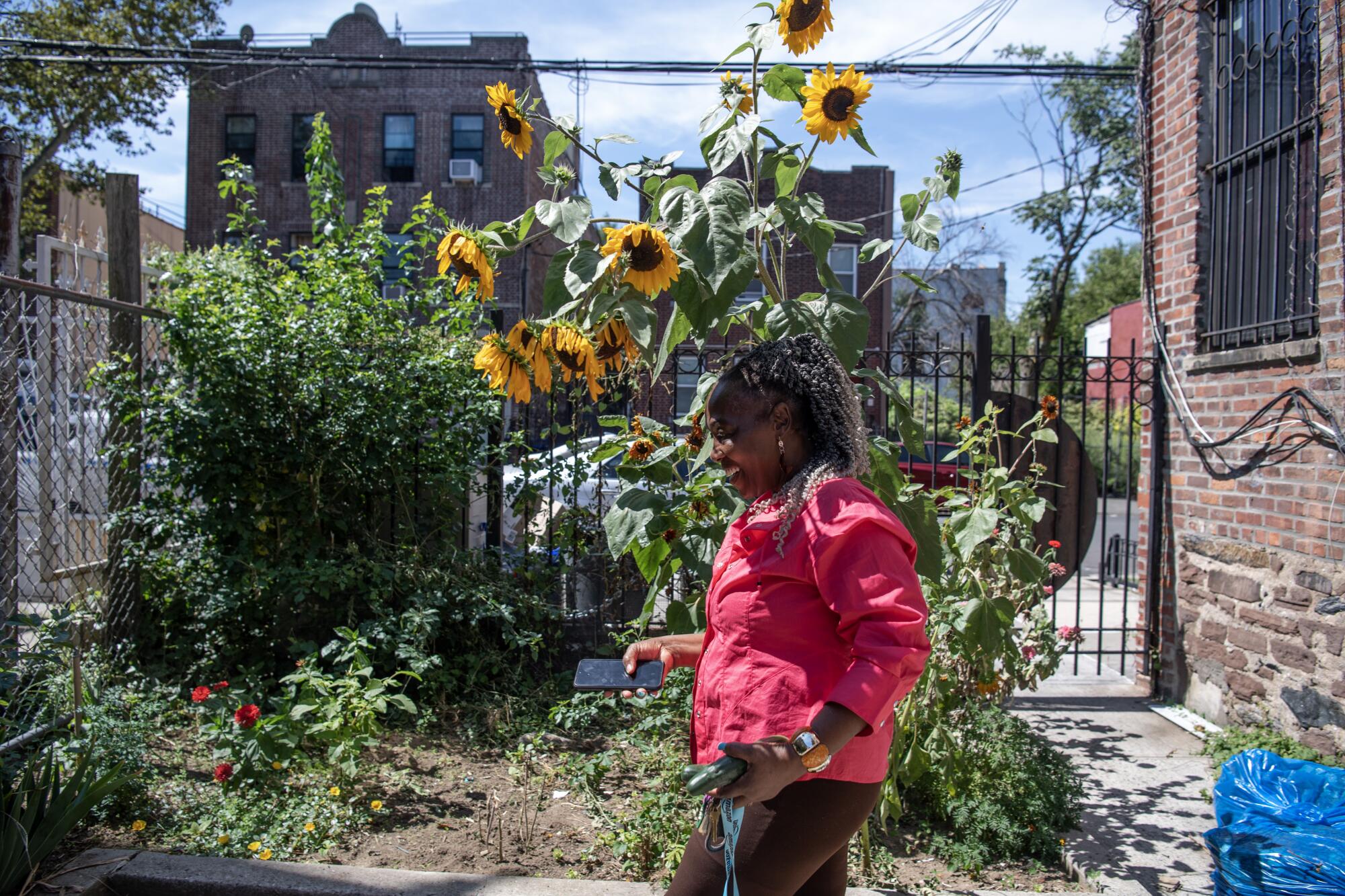
Pendergrass sometimes helps a friend sell food at the annual West Indian Day carnival and parade as colorful floats and dancers wind through Brooklyn.
On a stroll through shady Prospect Park, next to the market, she spots a Black man doing aerobics to Michael Jackson’s “Don’t Stop (Till You Get Enough).” He looks as excited as Pendergrass to see other Black people in this mostly white neighborhood.
“I’m from Trinidad!” he says, between rhythmic knee lifts, to Pendergrass and me, a Black American reporter.
“One love!”
Pendergrass bursts with laughter over her fellow islander’s giddy call for solidarity.
It’s not just immigrants in New York’s thriving communities from the Caribbean and Africa who celebrate her idea that “we are one Black people.”
Black American civil rights leaders, entertainers, artists and educators in the 1960s and ’70s saw hope for racial uplift in the liberation of nations such as Jamaica, Ghana and Kenya from white colonial rule. Today, more and more descendants of enslaved Africans are using DNA testing to trace their roots to their ancestral homelands.
As Pendergrass makes her way back to where she lives in Brooklyn’s Brownsville neighborhood to rest on a 95-degree day, a block party gears up in the Bedford-Stuyvesant district a few miles away. Kids race through the spray of a fire hydrant and families barbecue on their front stoops. Revelers dance and sweat on the asphalt to Black house music mixed with African and Afro-Latino rhythms.
Sharon Jackman, a Black American who made a special trip from New Jersey to attend, twirls, struts, leaps and two-steps to the beat.
Sharon Jackman, in white, enjoys the uplifting mix of Black American and Afro-Latin beats at a house-music street party in Brooklyn. (Tyrone Beason)
“There are no words in the dictionary,” she says, that can adequately capture the power of this musical fusion, or the unifying messages in the songs’ lyrics. Jackman, who has many West Indian friends, came dressed in what she called her cultural attire — a tropics-inspired white blouse with ruffled lace sleeves, white pants and a Panama hat over a yellow head wrap.
Yet when told that many African and West Indian immigrants feel alienated from Black America, she nods with recognition.
“For whatever reason, we tend to separate ourselves,” says Jackman, 57.
The detachment is all the more difficult to reconcile because many Black people from the U.S. also struggle with being “the other,” she says.
“Unfortunately, being born in this country, we lose something as far as heritage, connection and spirituality,” Jackman says.
She’s troubled that this angst sometimes manifests as resentment against foreign-born Black people, when for her, their ethnic pride is an inspiration.

In Brownsville, Pendergrass has conjured up a Tangle River oasis in the grassy area inside the gate of her three-story apartment complex. She grows peppers, tomatoes and cucumbers, along with leafy callaloo — similar to collard greens in Black Southern cuisine. Sunflowers bob in the morning breeze.
She stoops to pluck weeds around delicate yellow flowers.
“In Jamaica, we call it 10 o’clock,” she says of the flower, with a grin. “It blooms brightly, wildly, at 10 o’clock — and then it dies.”
Wearing a shirt that says “House Every One,” her long twists of salt-and-pepper hair pulled back in a ponytail, Pendergrass is all smiles.
Now divorced, she lives in a modest apartment with an adult daughter, as well as a granddaughter who relocated to the U.S. after Pendergrass’ eldest child died of kidney failure in Jamaica. There’s a living room with a dining nook, small kitchen and three small bedrooms.
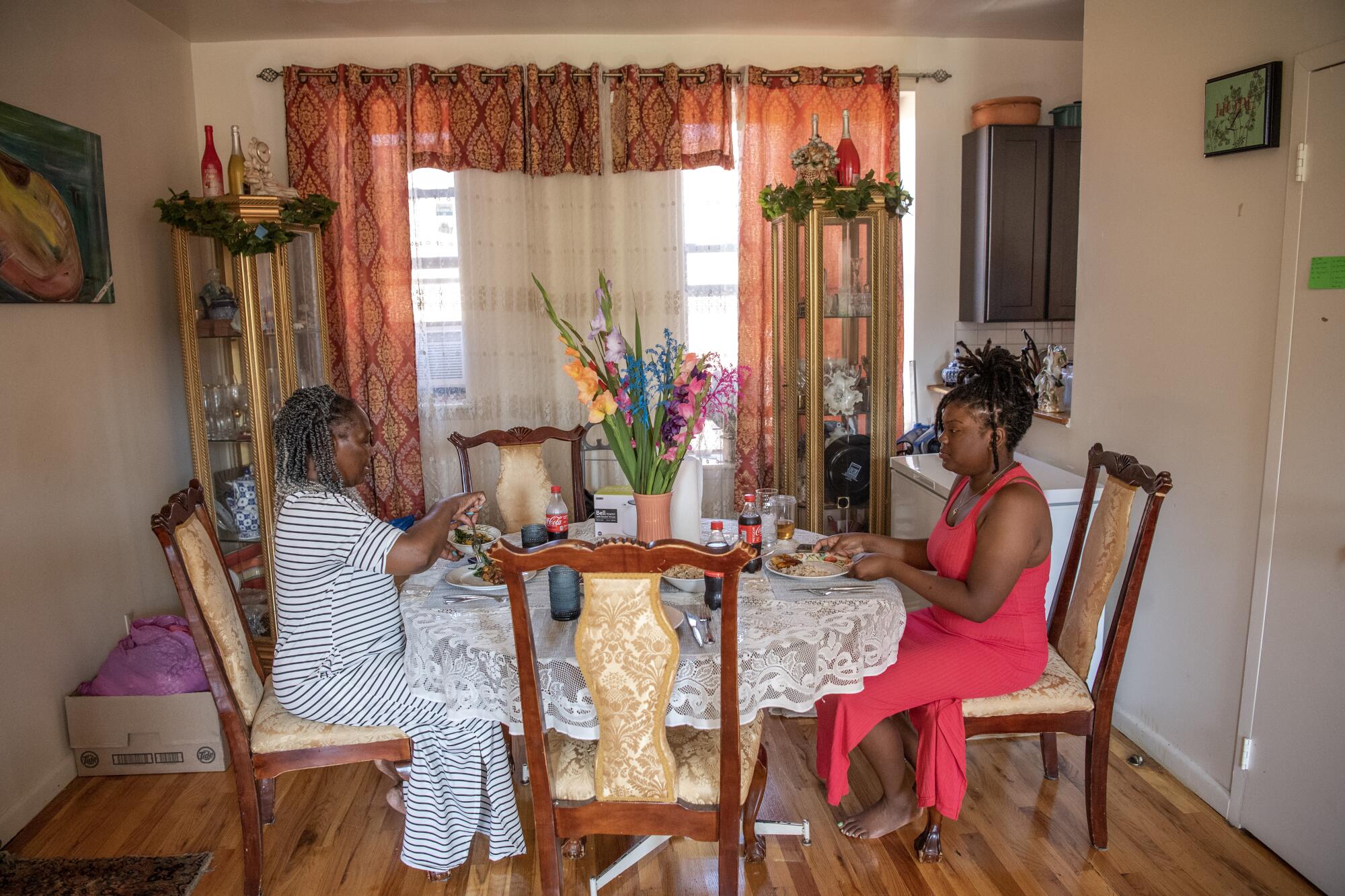
Pendergrass sits on a stool next to her 20-year-old granddaughter, Aliyah Folkes, and lays her head on her shoulder. She’s grateful to the U.S. for issuing Folkes a green card last year, allowing her to work and go to school.
Pendergrass’ personal goal is like that of many immigrants — to buy property and own a stake in her adopted country.
“With all of the problems ... in Jamaica, it made America seem like heaven,” she says.
She discovered that the socioeconomic distress doesn’t necessarily end at the U.S. border. Pendergrass says most of the residents on her street are also from the islands, and many live paycheck to paycheck.
Half of the Black immigrants in The Times/KFF survey said they had problems covering basic necessities, more than immigrants of other races, and they were significantly more likely to say they work in jobs for which they are overqualified.
Gang violence is also a worry, Pendergrass says.
Metro trains rumble overhead as she gives a tour of her neighborhood. A handful of Black children take refuge from the heat in a public pool a few blocks away. A young Black athlete practices his soccer kick on a nearby playing field.
Pendergrass explains how white flight in the 1960s and ’70s resulted in the stark racial segregation that makes the neighborhood feel like an island in its own right — populated almost entirely by Black people.
She stops next to a high-rise public-housing complex and watches as residents receive groceries from a food-giveaway van. She fears that the new apartments cropping up among the mom-and-pop businesses, corner liquor shops and storefront churches could force out families that have few other housing options.
Carrying out the KFF/L.A. Times survey of immigrants required work far beyond the normal survey, but the result provides a unique source of information about America’s immigrant population.
Back at home, Pendergrass lunches on spicy goat curry from one of the neighborhood’s Jamaican restaurants. She’s brightened up the living room with potted plants that catch the sunlight pouring through a window.
The apartment is where she rejuvenates her spirit.
In Tangle River, life revolved around church. In Brooklyn, she prefers to practice her faith privately at home.
She lies on her bed, stretches out her arms and prays — sometimes at 3 or 4 in the morning, when it seems as though no one is awake but her and God.
Those solitary prayer vigils keep her grounded, because even though she’s grown accustomed to being told she’s not welcome, navigating her status as both a Black woman and an immigrant can still leave her feeling adrift.
Pendergrass relates a more positive experience that gave her a fleeting taste of what an embrace from Black America might feel like.
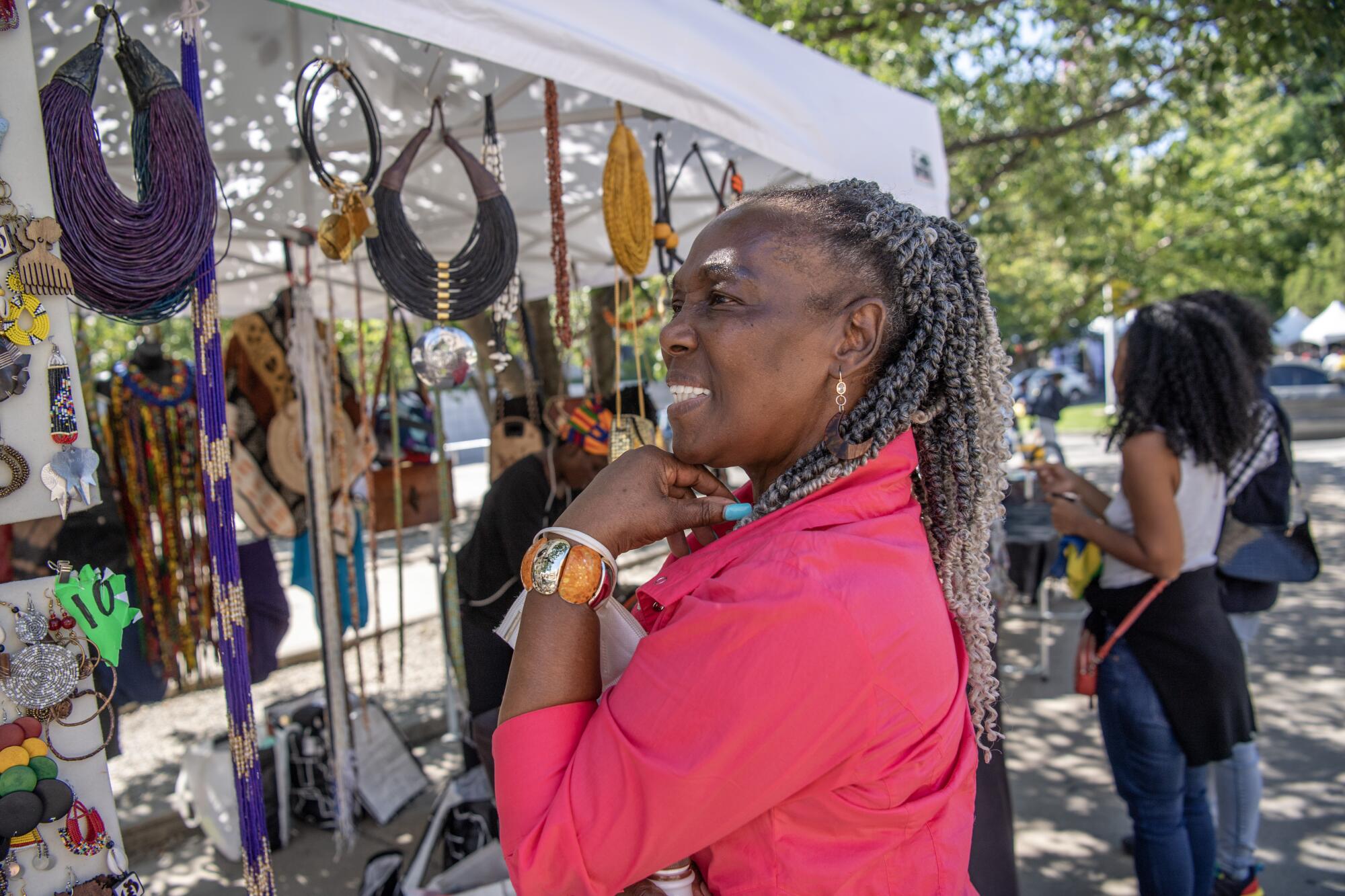
It happened during a visit years ago to the Old Slave Market Museum in Charleston, S.C. — once a major arrival port for slaves.
“Something came over me,” Pendergrass says. “I was hearing sounds. I was transported.”
Nearby, an elderly member of South Carolina’s Gullah Geechee people — descendants of Africans who were forced to labor on plantations along the Atlantic Coast — was busy weaving a traditional hat out of sweetgrass.
The woman’s gaze was so piercing, it sent goosebumps up Pendergrass’ arms.
“We started talking, and I’m watching her hands,” Pendergrass says. “The same craftiness of the people in Jamaica who make the broad hats from thatch. It was the same pattern. ... She says, ‘They’re glad to see you, girl — they’re glad to know you’re here.’”
Pendergrass suddenly realized who the woman was talking about: The ghosts of the Africans who had been imprisoned and auctioned on the site where the museum stands.
“Spirit knows spirit,” the woman said.
“Oh my God, is this what heaven is going to be like?” Pendergrass recalls thinking. “Everybody is going to see me and recognize me — and know that I’m a part of the clan?”
Here’s how the Los Angeles Times/KFF poll of American immigrants was conducted.
More to Read
Sign up for Essential California
The most important California stories and recommendations in your inbox every morning.
You may occasionally receive promotional content from the Los Angeles Times.

